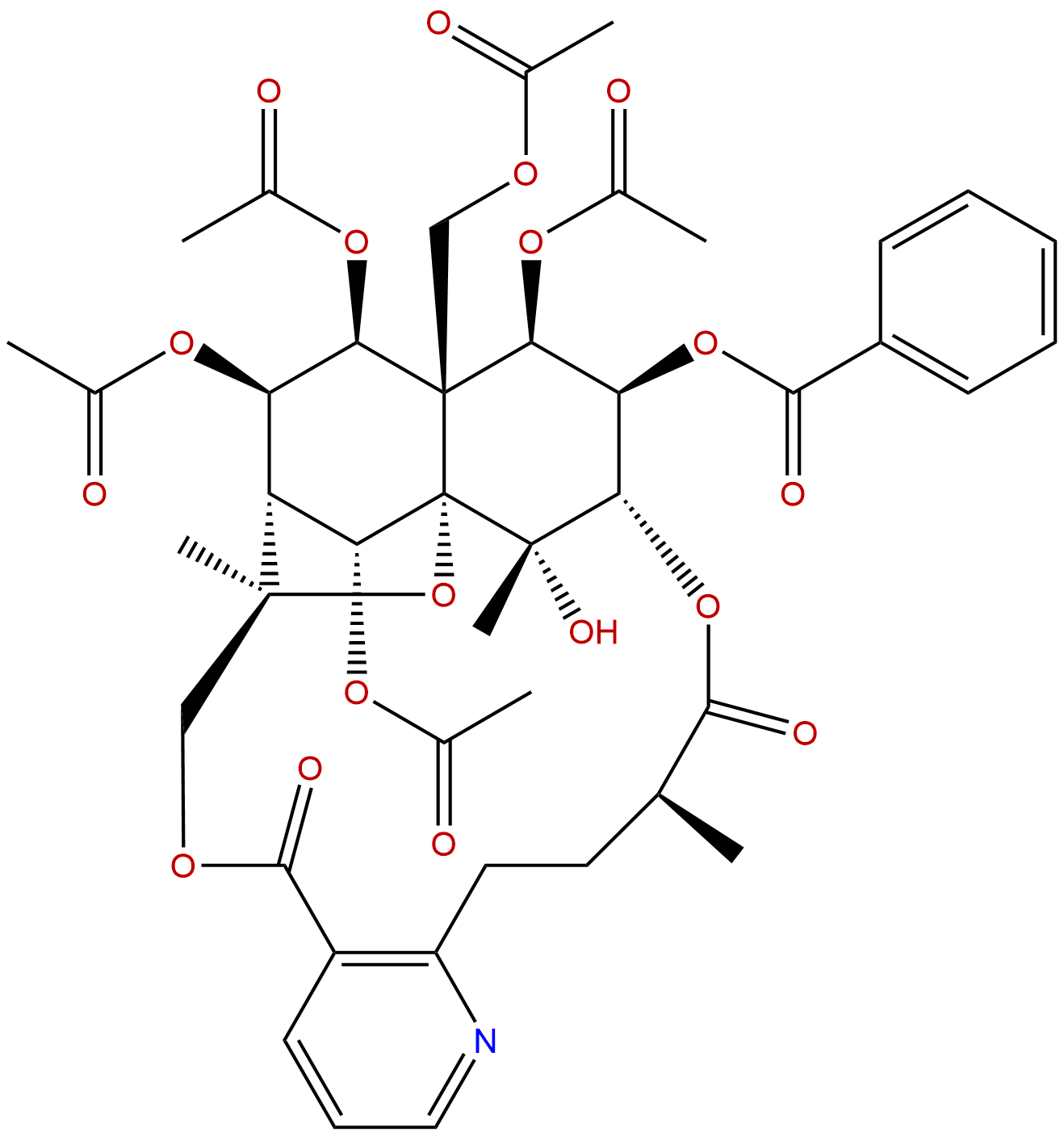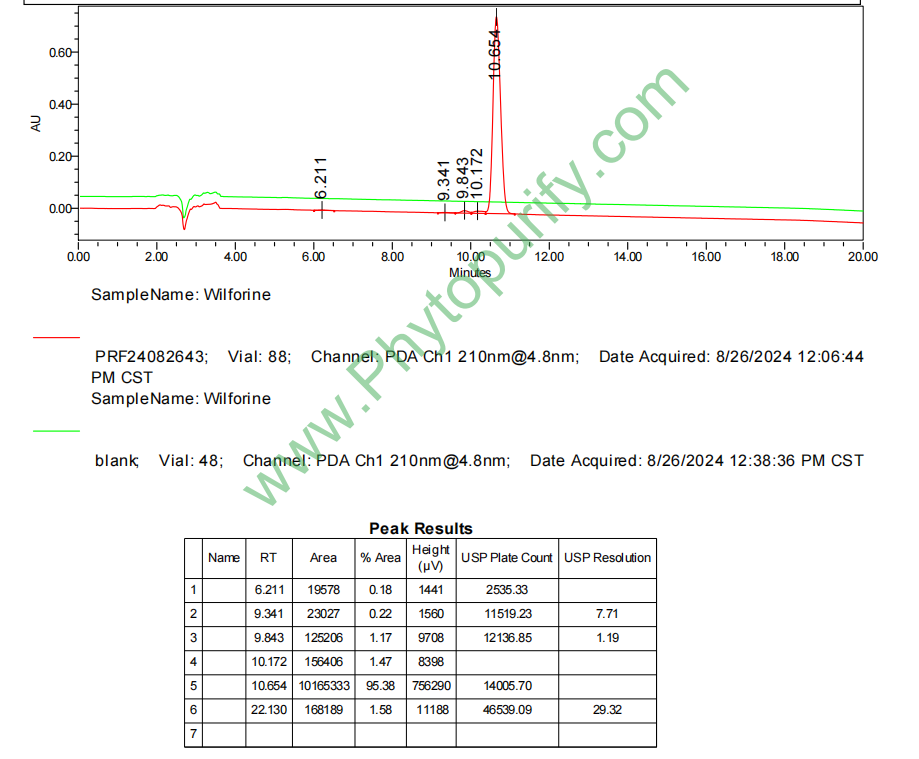
WilforineCAS No.:11088-09-8
|
||||||||||
 |
|
|
||||||||

| Catalogue No.: | BP1588 |
| Formula: | C43H49NO18 |
| Mol Weight: | 867.854 |
Product name: Wilforine
Synonym name:
Catalogue No.: BP1588
Cas No.: 11088-09-8
Formula: C43H49NO18
Mol Weight: 867.854
Botanical Source: Alkaloid from Tripterygium wilfordii and Maytenus senegalensis (Celastraceae)
Physical Description: Powder
Type of Compound: Sesquiterpenoids
Purity: 95%~99%
Analysis Method: HPLC-DAD or/and HPLC-ELSD
Identification Method: Mass, NMR
Packing: Brown vial or HDPE plastic bottle
The product could be supplied from milligrams to grams. Inquire for bulk scale.
We provide solution to improve the water-solubility of compounds, thereby facilitating the variety of activity tests and clinic uses.
For Reference Standard and R&D, Not for Human Use Directly.
Description:
Wilforine has anti-inflammatory effect, which might be mediated by down-regulation of the expression of inflammatory factors TNF-α, IL-6 and NO. It also has insecticidal activity by inhibiting the Na+-K+-ATPase in the central nervous system.
References:
J Microbiol Biotechnol. 2014 Jun 28;24(6):823-34.
Establishment of Tripterygium wilfordii Hook. f. Hairy root culture and optimization of its culture conditions for the production of triptolide and wilforine.
METHODS AND RESULTS:
In order to solve the shortage of natural Tripterygium wilfordii Hook. f. plant resource for the production of the important secondary metabolites triptolide and Wilforine, hairy roots were induced from its root calli by Agrobacterium rhizogenes. Induced hairy roots not only could be maintained and grown well in hormone-free half-strength Murashige and Skoog medium but also could produce sufficient amounts of both triptolide and Wilforine. Although hairy roots produced approximately 15% less triptolide than adventitious roots and 10% less Wilforine than naturally grown roots, they could grow fast and could be a suitable system for producing both secondary metabolites compared with other tissues. Addition of 50 micrometer methyl jasmonate (MeJA) could slightly affect hairy root growth, but dramatically stimulated the production of both triptolide and Wilforine, whereas 50 micrometer salicylic acid had no apparent effect on hairy root growth with slightly stimulatory effects on the production of both secondary metabolites. Addition of precursor nicotinic acid, isoleucine, or aspartic acid at the concentration of 500 micrometer had varying effects on hairy root growth, but none of them had stimulatory effects on triptolide production, and only the former two had slightly beneficial effects on Wilforine production. The majority of triptolide produced was secreted into the medium, whereas most of the produced Wilforine was retained inside of hairy roots.
CONCLUSIONS:
Our studies provide a promising way to produce triptolide and Wilforine in T. wilfordii hairy root cultures combined with MeJA treatment.
HPLC of Wilforine
